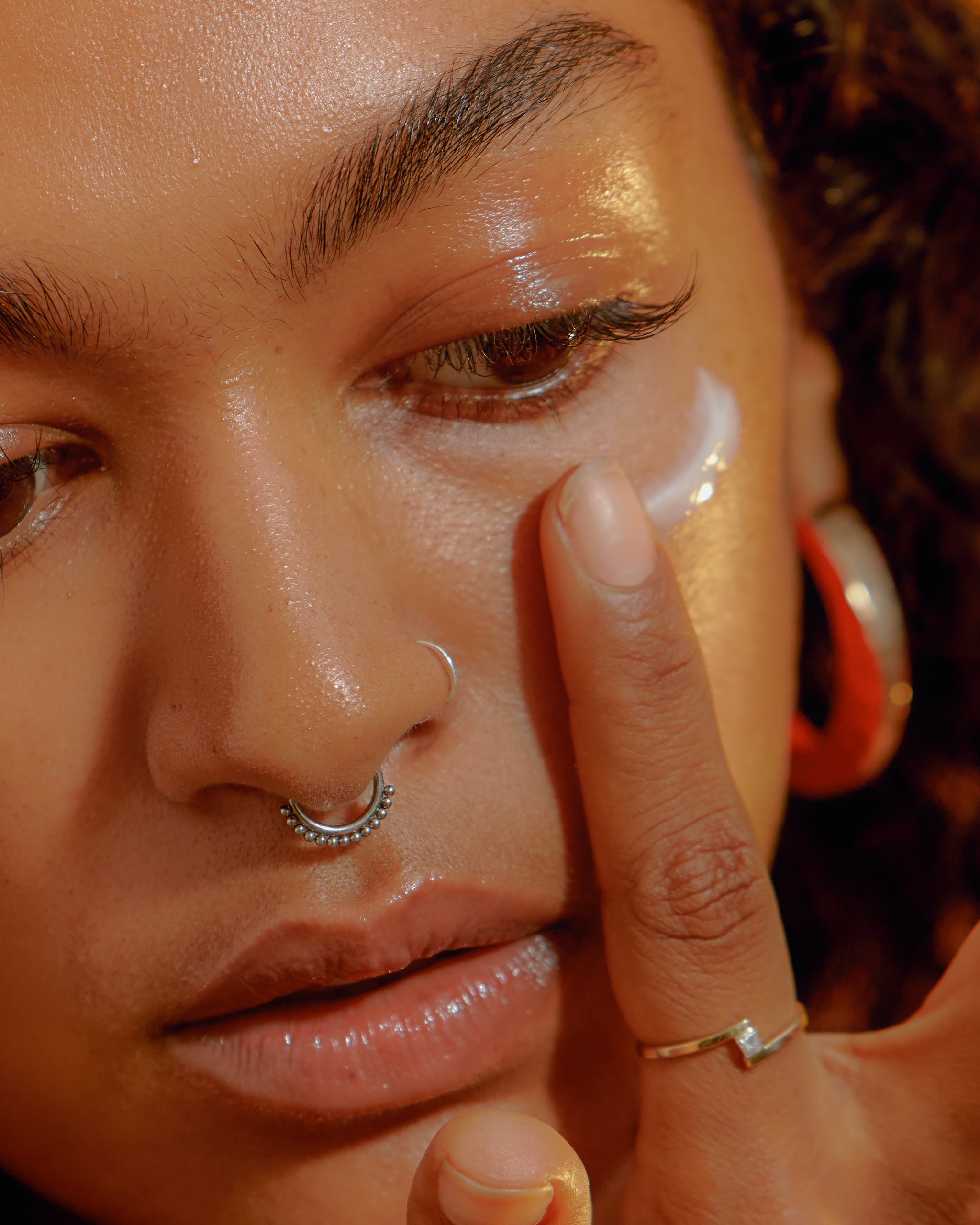
There's nothing the skin-care community loves more than a well-researched ingredient with multiple benefits. From vitamin C [1] to niacinamide [2], multitasking heroes are the cost- and time-effective way to help to streamline our shelfies. Of late, azelaic acid, an often-overlooked dermatologist favourite, has been getting more recognition for its acne-busting, rosacea-calming properties, which is why we spoke to trusted experts to get intel on why azelaic acid is an ingredient [3] worth getting to know.
Keep reading to learn what it is, how to use it in your routine, and more.
What Is Azelaic Acid?
Hailed as the overachieving ingredient that can treat acne and rosacea, azelaic acid is a naturally occurring acid, according to consultant dermatologist Mary Sommerlad, MBBS, MRCP [4]. "Azelaic acid belongs to a family of acids called dicarboxylid acid," Dr. Sommerlad tells POPSUGAR. "It is derived from grains and wheat but can also be formulated synthetically in labs." The lab-engineered version is most often used in skin care not only due to its stability, but also so that it's safe for those with a gluten intolerance.
Azelaic Acid Benefits
Like any good multitasker worth its weight in gold, "Azelaic acid is an extremely versatile ingredient that boasts numerous skin benefits," Nicolas Travis, founder of Allies of Skin [5] and PSA [6], says.
Dr. Sommerlad agrees, explaining that it was initially designed as an acne treatment. "It has anti-inflammatory and antibacterial qualities, which are great for acne-prone skin as it can help calm and reduce spots." Those properties are what make azelaic acid an excellent choice for treating rosacea, too. "Papulopustular rosacea [7] is associated with red bumps and pus-filled blemishes, and regular use of azelaic acid helps to mitigate the associated redness and swelling with minimal risk of adverse side effects," Dr. Sommerlad says.
Similar to other well-loved acids such as AHAs and BHAs, azelaic acid does have exfoliating properties, albeit much gentler and, therefore, far better tolerated by sensitive or compromised skin.
For those suffering from post-inflammatory hyperpigmentation, azelaic acid can also help to fade stubborn marks. "It can improve hyperpigmentation by inhibiting tyrosinase, the enzyme crucial to the production of melanin," Dr. Sommerlad says, adding that although azelaic acid tackles excessive melanin production, it doesn't depigment the skin. "Azelaic acid is a great long-term treatment option for people with melasma, and at concentrations of 20 percent, it has been shown to be as effective as four-percent hydroquinone, which is known for having several side effects."
If that wasn't enough, it also acts as a powerful antioxidant to help counteract the effects of pollution on the skin.
Who Can Use Azelaic Acid?
Thankfully, azelaic acid is a largely well-tolerated ingredient, suitable for all skin types with few side effects. "Mild irritation such as burning, stinging, and redness can occur when using high concentrations," Petrina Nugawela, a specialist aesthetic practitioner and the founder of MBA Clinics [8], says. She added it may not mean that the product disagrees with you and rather that you need guidance with application and dosage.
There's also good news for those who are pregnant or breastfeeding, as azelaic acid is one of the few topical acne- and rosacea-fighting ingredients that is widely regarded as safe. "It is not known to be harmful in pregnancy but the recommendation is to only use if the benefits outweigh potential risks," Dr. Sommerlad says. She also says that dermatologists are generally happy to prescribe prescription-strength azelaic acid to those trying to conceive and throughout pregnancy. Nugawela says that while there is no known risk, you should always get confirmation from your doctor and midwife first before starting or continuing treatment.
How To Use Azelaic Acid
Just like other acids, azelaic acid comes in multiple different strengths. "It can be purchased at concentrations of 10 percent over the counter, but concentrations at 15 percent and 20 percent, which may be more effective for moderate acne, melasma, and postinflammatory hyperpigmentation, are available on prescription," Dr. Sommerlad says.
Regardless of the strength, Dr Sommerlad says it can be used in both morning and evening routines. "Unlike other ingredients, it can be used morning and evening," she says. "If using in the morning, apply after a vitamin C but before SPF." Nugawela adds that if using in the evening, apply a thin layer on clean, dry skin at least half an hour before bed. "Be mindful that if using a prescription-strength retinoid as well, limit azelaic acid to alternate days or in the morning only," she says.
Although combining active ingredients can be a minefield, Travis says that azelaic acid plays well with other ingredients. "It's a great ally and I like pairing it with ingredients that have antiblemish and brightening properties," he says. Dr. Sommerlad adds that not only does azelaic acid work very well with a number of ingredients, particularly retinoids, antioxidants, and liquid exfoliants, it can also increase the potency of their effects. "It is a real skin-care hero of mine, but as always, when using active ingredients, gradually introduce your skin to azelaic acid by applying it only a few times a week for the first week or two before building up," she says.